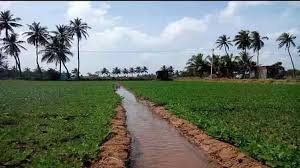By Javed Iqbal.
LAHORE – The authorities have approved the dissolution of a 27-year-old flagship public–private partnership (PPPP) in the irrigation sector that had received international aid.
In this regard, a summary would be submitted for final approval to Punjab Chief Minister Maryam Nawaz.
The services of the authority’s regular staff would be transferred to the surplus pool of the S&GAD for future posting.
Why was PIDA established?
The Punjab Irrigation and Drainage Authority (PIDA), established in 1997 inside the Punjab Irrigation Department, was intended to implement reforms through farmer participation. Despite receiving funds from donor organizations to make the initiative farmer-inclusive, it was claimed that it failed to meet its aims and instead exacerbated conditions.
This project established Area Water Boards and Farmer Organisations (FOs) in certain zones. The original plan was to replace the Punjab Irrigation Department (PID) with PIDA.
Success Stories for PIDA
According to the World Bank research, FOs addressed over 2,800 water disputes, including 1,758 incidences of water theft, and improved water availability by resolving theft issues.
However, political elites and bureaucratic resistance stymied the project’s success.
The Punjab government disbanded PIDA via an ordinance, establishing a new authority with no functions in its place. The claimed reason for PIDA’s abolition was a failure to accomplish objectives, as indicated by lower Abiyana collection rates – 45 percent in PIDA districts against 70 percent in other areas.
Why was the Punjab Khal Panchayat Authority (PKPA) established?
After PIDA was converted into the Punjab Khal Panchayat Authority (PKPA) in May 2019, the authority was abolished, while many officers remained stationed there. It is alleged that the authority had become a parking lot for personnel who disagreed with the upper hierarchy.
Why did irrigation officers hold senior positions in PIDA and PKPA?
A top authority official, who requested anonymity, questioned the basis for salary and perks in light of the PKPA’s lack of work. He observed that senior officers were often sidelined in the PKPA. He claimed that the department’s performance remains dismal, with widespread water theft and ineffective recovery. He claimed there was no mechanism in place to monitor irrigation officers’ performance.
He stated that one of the reasons for failure was the placement of high-level executives in the authority.
Why did authority become a parking lot for irrigation officers?
According to documents, the PKPA has four Grade 20 slots (one Managing Director and three General Managers for administration, finance, and operations), four Deputy Managing Director slots in Grade 19, 15 Grade 18 manager roles, and 84 Grade 17 officer jobs. Since the authority’s inception, the Irrigation Department secretary has served as its managing director.
According to previous data, 151 of the 285 sanctioned roles have been filled, leaving 134 empty.
The authority’s approved budget for 2021-22 was Rs292 million, which included Rs200 million for salaries, Rs39 million for travel and transportation, Rs26 million for advertising, and Rs12 million for repairs and maintenance.
According to the body’s last meeting minutes, one reason stated for dismantling the authority was the exorbitant spending on annual KP elections, which totaled Rs598 million, with the Punjab exchequer carrying an extra Rs411 million.
When PKPA was founded, it had Rs400 million in accounts, which were spent on employee pay due to a lack of a long-term funding strategy.
Foreign funding details
An insider revealed that in December 2006, the Asian Development Bank (ADB) granted a $900 million multitranche financing facility (MFF) for the Punjab Irrigated Agriculture Investment Programme (PIAIP) to co-finance irrigation sector investments in Punjab. This included two loans for $227.8 million for the first project.
The MFF sought to develop irrigation infrastructure and promote institutional change for farmer management of the irrigation system.
Punjab’s irrigated agriculture, which contributes for 26% of its GDP and employs more than 40% of its labor population, spans 8.4 million hectares with a cropping intensity of more than 120 percent.
Fourteen barrages deliver water via 22 main and link canals, with the system valued at over $18 billion and requiring more than $3 billion in renovations. The Country Partnership Strategy (CPS) (2009–2013) focuses on enhancing irrigation infrastructure, institutions, and agricultural output.
Achievements of the PPPP
The PID delegated control of 1.5 million hectares to farmer organisations (FOs). The Lower Doab Canal Improvement Project (LBDCIP) Bari under MFF tranche 1 aimed to improve infrastructure and assist institutional reforms.
Tranche 2 funded the New Khanki Barrage Project (NKBP), which benefits 568,000 farming families. ADB’s third funding request for $73 million under Tranche 3 planned to repair the Suleimanki Barrage, which would provide stable water supply to 1.01 million hectares and help around 360,000 farming communities.
Who was responsible for PPPP’s failure? Will those responsible be brought to justice?
A senior member of the Planning and Development Board, who requested anonymity, stated that the PKPA’s removal would be a blow to Punjab’s much-touted PPPP model, in addition to the trust deficit with foreign donor agencies such as JICA, ADB, and the World Bank. With the elimination of the PIDA and now the PKPA, farmer participation in irrigation management ceased to exist. He suggested that think tanks or university students concentrate on the typical failure of the PPPP paradigm. He argued that it is necessary to determine how much foreign funding was used to run this project and who was responsible for its failure.

